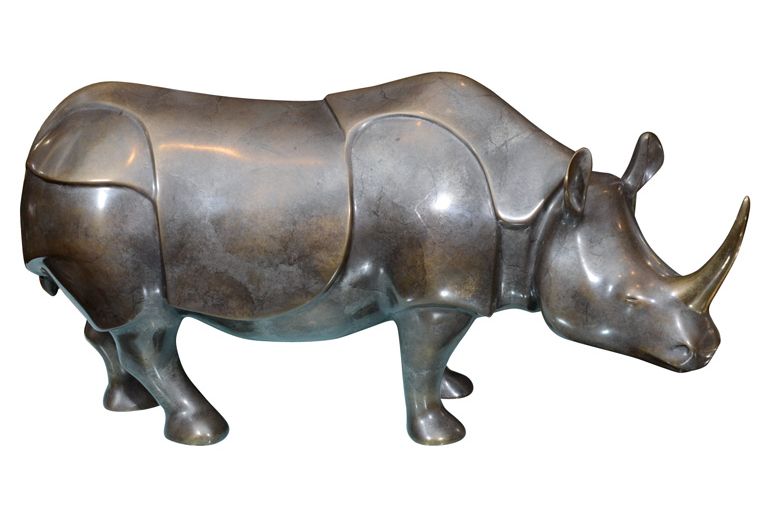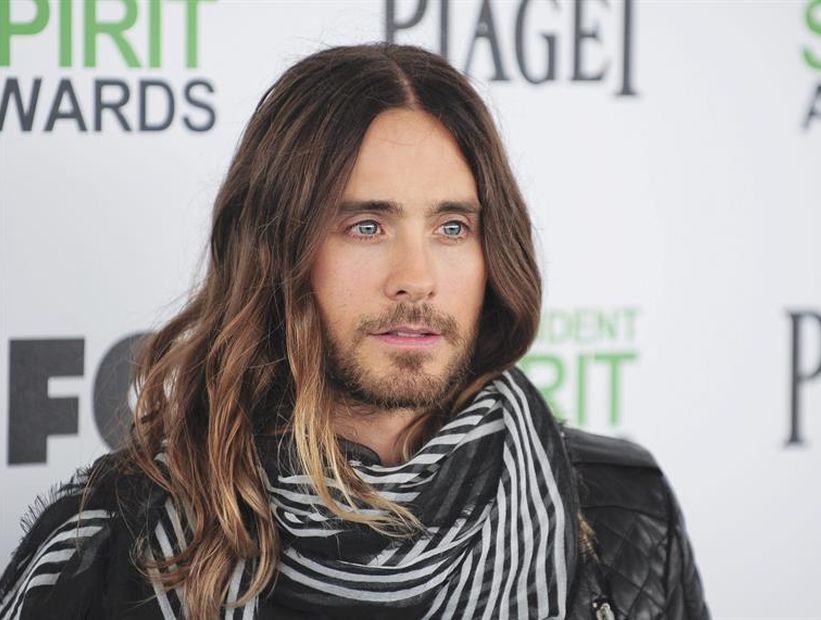Kendra Haste
Ya hice una amplia revisión de su obra hace unos días. Me remito al post previo para más imágenes e información.
Aquí tienen su rinoceronte, como todo en su obra con una perfecta ejecución y notable realismo.
"Rinoceronte / Rhinoceros", armazón de acero, alambre galvanizado pintado, pieza única /
Steel armature & painted galvanised wire - unique, 260 x 160 x 160 cm., 2000 / 2014
Cannon Hall Museum, Barnsley (Reino Unido / UK) © 2015 Kendra Haste
© 2015 Kendra Haste
The British artist Kendra Haste creates life-size animals with galvanized wire mesh.
I already did an extensive review of her work a few days ago. I refer to the previous post for more pictures and information.
Here are her rhino, like everything else in her work with perfect execution and stunning realism.
© 2015 Kendra Haste
Más sobre Kendra Haste en "El Hurgador" / More about Kendra Haste in this blog:
Más imágenes e información sobre Kendra / More images and information about Kendra:

Dariusz Zieliński
Dariusz Zieliński es un escultor y músico polaco.
Disfrutábamos hace pocos días de una selección de imágenes y una entrevista en la que nos ofrecía algunas claves sobre su trabajo. Ahora, una muestra de sus rinocerontes, muy presentes en su obra.
"Rinoceronte / Rhino", 28 x 38 cm. Imagen / Image: Artist's website
"Rinoceronte volador / Flying Rhino", 30 x 40 cm. Imagen / Image: Artist's website
"Rinoceronte volador / Flying Rhino", 30 x 40 cm. Imagen / Image: Artist's website
«Cuando pienso ¿por qué rinocerontes?, creo que la razón principal es porque son animales hermosos. Se ven fuertes, su piel es casi como el bronce. La textura adorable de la piel del rinoceronte es como las antiguas esculturas de bronce. Todos los rinocerontes parecen esculturas de bronce, y tal vez es por eso que utilizo su belleza natural.
No sé si es visible en las imágnes, pero hago muchas "citas" derivadas de la naturaleza. Es decir, en texturas y formas.»
"El la tierra del rinoceronte / In the Rhino Land", bronce / bronze, 37 x 51 cm.
Imagen / Image: Artist's website
"Jinete de rinocerontes / Rhino Rider" 39 x 40 cm. Imagen / Image: Artist's website
Dariusz Zieliński is a Polish musician and sculptor.
We enjoyed a few days ago a selection of images and an interview in which we offered some clues about his art. Now, a selection of his rhinos, an animal very present in his body of work.
We enjoyed a few days ago a selection of images and an interview in which we offered some clues about his art. Now, a selection of his rhinos, an animal very present in his body of work.
"Jinete de rinocerontes / Rhino Rider" 39 x 40 cm. Imagen / Image: Artist's website
"Rinoceronte azul / Blue Rhino", 43 x 20 cm. Imagen / Image: Artist's website
"Jinete de rinoceronte con ámbar / Rhino Rider with Amber", 32 x 32 cm.
«When I'm thinking - why rhinos?; I think main rison is becouse the animals are beautiful. They look strong, their skin is almost like bronze. Lovely texture of rhinos skin is like old bronze sculptures. All rhino looks like bronze sculpture and maybe that's why I use their natural beauty.
I do not know if this can be seen in the pictures, but I have a lot of "citations" derive from nature. I mean texture and shapes.»
"Jinete de rino-abejorro / Bumblebeer Rhino Rider", 46 x 30 cm.
"Jinete de rino-abejorro / Bumblebeer Rhino Rider", 46 x 30 cm.
"Rinoceronte / Rhino", 16 x 33 cm.
Más sobre Dariusz en "El Hurgador" / More about Dariusz in this blog:
Más imágenes e información sobre Dariusz / More images and information about Dariusz:
James Chedburn
Tras unos comienzos de cuento de hadas en Kuala Lumpur, Malasia, como uno de las últimas generaciones en nacer dentro del Imperio Británico, James Chedburn regresó con su familia a sus raíces inglesas. Se crió en la pequeña ciudad mercantil de Frome, rodeado de hermanos y espacio, y con una sensación de libertad casi desconocida hoy en día.
A menudo monta sus esculturas cinéticas en latas antiguas; una idea eficaz e interesante que se suma a su encanto. En su obra reciente, Chedburn añade papel maché al alambre (como en el rinoceronte que puede verse aquí debajo), lo que otorga a las escultuas una sensación completamente diferente, de piel, como que en algún momento estuvo viva.
"Rinoceronte / Rhino", alambre de cobre, papel maché y caja vieja de metal /
brass wire, papier mâché on old metal box, 38 x 30 x 14 cm., 2009
After fairy tale beginnings in Kuala Lumpur, Malaysia, as one of the last generations to be born into the British Empire, James Chedburn returned with his family to his English roots. He grew up in the sleepy market town of Frome, surrounded by siblings and space and with a sense of freedom little known to youth today.
He often mounts the kinetic sculptures on vintage tins – an interesting and effective idea that adds to their charm. In recent work, Chedburn added paper mache to the wire (like the Rhino you can see above), which give the sculptures an entirely different feel – this sense of skin; alive at one time.
"Rinoceronte pequeño / Small Rhino", alambre de cobre, papel maché y lata vieja /
brass wire, papier mâché on old tin, 22 x 26 x 12 cm., 2010
Más imágenes e información sobre James / More images and information about James:
Loet Vanderveen
Nacido en Rotterdam, Holanda, la odisea creativa de Loet Vanderveen comenzó como diseñador de modas en Zurich, London y, eventualmente, en Nueva York. Allí estudió cerámica y química de esmaltes, y comenzó a crear cerámicas como una salida con más desafío para su talento.
En 1959 se mudó a una casa en Big Sur, California, suspendida a 1800 pies sobre el Océano Pacífico. Trabajando en el esplendoroso aislamiento de su ambiente, Loet se ha hecho desde entonces un maestro en la observación de la vida animal. Sus estilizadas ediciones limitadas en bronce de formas animales, se enriquecen con las más sutiles pátinas. Omitiendo los detalles, logra la brillantez al retratar la esencia de los animales.
"Rinoceronte de estudio / Studio Rhino", bronce, edición limitada / limited edition bronze, 4.5" x 7.5"
Imagen / Image: RTG
"Rinoceronte de Noé / Noah’s Rhino", bronce / bronze, 7,25" x 3"
Hoy en día Loet Vanderveen disfruta de una reputación como uno de los más importantes escultores de vida animal, y su obra ha sido exhibida en galerías y museos de todo el mundo. Viajero frecuente, continúa buscando inspiración en las graciosas imágenes de la naturaleza de los muchos lugares que visita.
Información de la Galería Pavo Real
"Rinoceronte, Africano / Rhino, African", bronce / bronze, 12" x 4" x 6"
"Rinoceronte imperial / Imperial Rhino", bronce / bronze, 23 x 46 x 18 cm. Imagen / Image: 1stdibs
Born in Rotterdam, Holland, Loet Vanderveen's creative odyssey began as a fashion designer in Zurich, London and, eventually, New York. There, he studied ceramics and glaze chemistry and began creating ceramic pottery as a more challenging outlet for his talents.
In 1959, Loet Vanderveen moved to a home in Big Sur, California, perched eighteen hundred feet above the Pacific Ocean. Working in the isolated splendor of this environment, Loet has since mastered the objective observation of animal life. His elegant, stylized limited edition bronze animal forms are enhanced by the subtlest patinas; while omitting details, he succeeds brilliantly in portraying the essence of the animal.
"Rinoceronte imperial / Imperial Rhino", bronce / bronze, 23 x 46 x 18 cm. Imagen / Image: 1stdibs
"Rinoceronte imperial / Imperial Rhino", bronce / bronze, 23 x 46 x 18 cm. Imagen / Image: 1stdibs
"Arca de Noé (grande) / Noahs Ark (large)", bronce / bronze, 32" x 9"
Today Loet Vanderveen enjoys a reputation as one of the foremost sculptors of animal life, and his work has been exhibited in galleries and museums throughout the world. A frequent world traveler, Loet Vanderveen continues to seek inspiration from the graceful images of nature from the many lands he visits.
Information from Pavo Real Gallery
"Rinoceronte / Rhino", bronce patinado con cuerno pulido / patinated bronze with polished horn, 4 ¼" x 2 ½"
Imagen / Image: Liveauctioneers
Verginer Matthias
Verginer Matthias es un escultor italiano nacido en Bressanone en 1982.
Estudió publicidad gráfica y escultura en la Escuela de Artes Selva/Gardena, entre 1996 y 2001. Hasta 2004 fue aprendiz de su padre Willi Verginer.
Actualmente vive y trabaja en Ortisei (BZ), en el norte de Italia.
Desde 2004 ha presentado su trabajo en un buen número de muestras individuales y colectivas.
En estas "Esculturas irónicas", Verginer presenta señoras de formas rotundas cabalgando la fauna más variada. Como es lógico, nos centramos en sus rinocerontes.
"Titanes de la Sabana / Titans of the Savanah"
Tilo, colores acrílicos / limewood, acrylic colors, 53 x 48 cm., 2015. Imagen / Image: Artist's website
Imagen / Image: Unika
Verginer Matthias is an Italian sculptor born in Bressanone in 1982.
He studied advertising graphics and sculpture at the School of Arts Selva / Gardena from 1996 to 2001. Until 2004 he was apprenticed to his father Willi Verginer.
He currently lives and works in Ortisei (BZ) in northern Italy.
Since 2004 he has shown his work in a number of solo and group exhibitions.
In his "Ironic Sculptures" Verginer presents round shaped ladies riding the more varied fauna. Naturally, we focus on his rhinos.
"Safari", tilo, colores acrílicos / limewood, acrylic colors, 54cm., 2013. Imagen / Image: Artist's website
Más imágenes e información sobre Verginer / More images and information about Verginer:



























%2C%2Bbronce%2C%2B32%2Bx%2B9%2Bin..jpg)











![An American Tail [1986] [DVD5-R1] [Latino]](http://iili.io/FjktrS2.jpg)








